
Historic Jyamarukkot becoming tourist hub
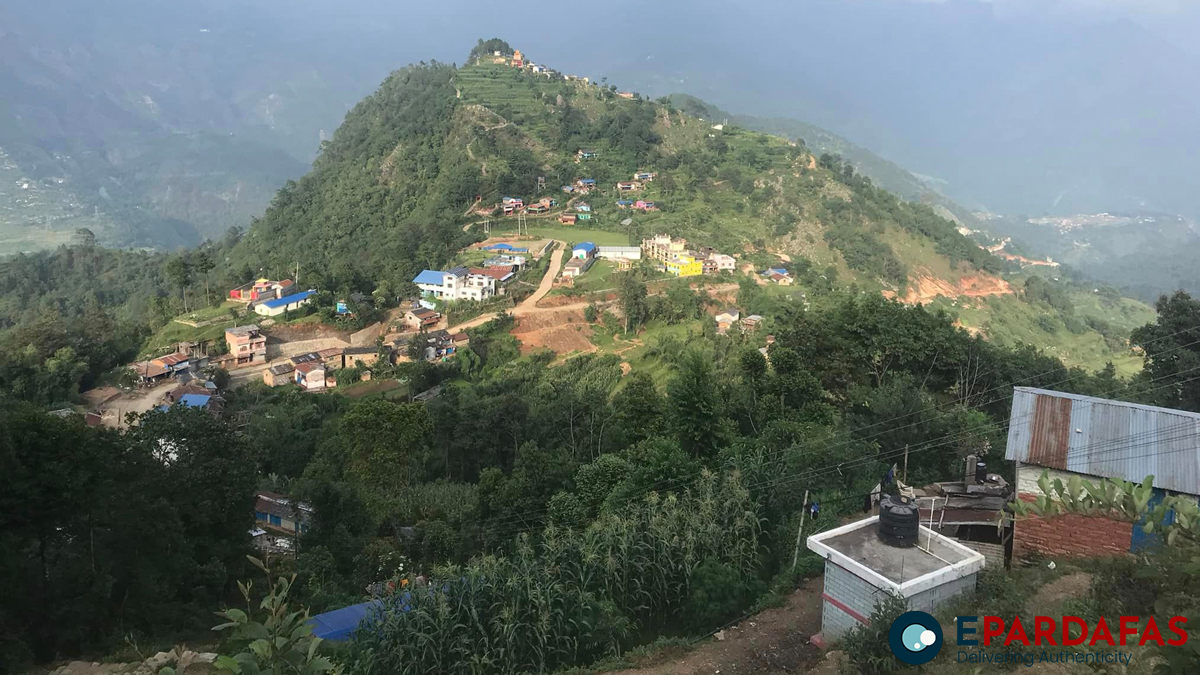
The jaw-dropping view of nine mountains including Dhaulagiri and Nilgiri to the north, Panchakot, the famous religious and tourist destination of Baglung district to the south, a dense forest of Gaushwara and Dole on top and the Beni bazaar below. Jyamarukkot of Myagdi district carrying historic and natural significance with serene environment and clean weather is lately turning into an attractive destination for tourists.
Situated 1,648 metres above sea level, Jyamarukkot dating back around 600 years, the chief strategic centre of then the Parbat state, is located in Beni Municipality-2 in the district. Historical and archeologically important heritages of the place that has carried the legacy of Thapa and Malla dynasties is lately becoming the major tourist spot.
Around six kilometres away from the district headquarters, Beni Bazaar, Jyamarukkot has been the choice of tourists and trekkers alike. Inhabited predominantly by people from Brahmin, Chhetri and Dalit communities, the traditional houses and friendliness and amiable behaviour of the villagers attract tourists. Filled with natural beauty, village lifestyle, own way of life and tradition, other things like natural view, historical armories and the traditional stone houses of Gaushwara have added to the attraction of the religious place.
Snowcapped mountains close to eyes to the north, the view of Beni and Baglung, the natural sceneries of dozens of rural villages of Mustang and Parbat districts including Ratnechaur, Panchakot, Panchase, Mallaj, Pulachaur, Dholthan, Takam and Rankhu, and pictures and images carved on the windows and doors of the houses in an artistic way are the things that is attracting and fascinating tourists.
One can have a view of over 15 mountains from Kotdando of Jyamarukkot including Dhaulagiri, Nilgiri, Annapurna and Machhapuchchhre, over 30 villages of Dhaulagiri and Gandaki regions, rural beauty, sunrise and sunset and the view of the serpentine Myagdi and Kaligandaki rivers.
Spanning 42 ropanis of land, the Kot premises with Malla era history, canons, swords and other weapons, ancient inscription, bricks, and the hideout for treasures and Rajkuwa (a pond used by kings), all these things being historic evidences has been the centre of attraction.
Tourists who have reached the place said stone houses here were alluring.
Natural beauty and greenery of the area stole heart of Bikas Sigdel from Pokhara, who was met visiting the place on last Saturday. “I liked the houses here than the ones in our area. I felt joy visiting the beautiful place near Beni. Natural beauty, historic importance of Jyamarukkot and lifestyle, and hospitality provided by the local people has made me feel like staying here,” he shared.
Lately, the number of tourists visiting Jyamarukkot is increasing, said a local social worker and trader Bhim Bahadur Paudel. Their number goes on despite rain, he said.
There is a crowd of tourists in the place during holidays, said the ward chair Yam Bahadur Karki.
“Now in the village, people are busy planting paddy. We come to the service of guests after completing our chores. Tourists visit here braving rain. There is no shortage of guests even during monsoon,” he said, adding that tourists can visit the place even by foot as it is nearer from the district headquarters. It takes around one hour to reach Jyamarukkot through Lovely hill from Beni.
Along with the beauty of the village, one can view the sunrise and sunset from here, observe the Pokhara Valley, and play with the snow at Gaushwara during snowfall, he said. There are hotels and homestay facilities here. One can savour various dishes including dhindo of millet, meat of local chicken, gundruk and soya bean pickles, pulse of sisno (stinging nettle leaf), pickle of niguro (fiddlehead fern) and tusa (germinated seeds) during rainy season, and millet alcohol.
But tourists face difficulties during rain due to the dirt road, said local people. Those who ride to the place on their own vehicles are subject to face trouble during rainy season, they said, demanding the blacktopping of the road.
Efforts are on from various quarters including the local level to conserve and make the religious place a tourist spot.
The Beni Municipality and ward office has intensified infrastructure construction with the aim of making Jyamarukkot (Khadgabhawani Kot) a religious and natural tourist destination, said the ward chair Karki. Jyamarukkot was ruled by Thapas since the beginning of the fifteenth century. Very rare weapons used during the reign of Malla dynasty have been kept in the place, he said. Efforts are on to make Jyamarukkot a confluence of religious, natural and historical importance. A 350 metres trail leading up to the temple and railings on the either sides have been constructed with an investment of Rs 2.1 million provided by Beni Municipality and the Gandaki provincial government.
Last year, a 210 metres fencing and Patangini have been constructed, and 200 metres road slop laid in the Kot premises with budget of Rs 700,000 (Rs 500,000 allocated by the municipality and Rs 200,000 by the ward office), said Ram Krishna Ghimire, chairperson of the Jyamarukkot Area Development and Guthi Management Committee.
“Our aim is to promote tourism of the place by connecting historic heritages here with development. We are happy that visiting tourists are increasing accordingly,” said Ghimire.
Having ruled during 1246 BS to 1545 BS, Thapas submitted themselves to the service of Malla kings as their ministers and armies ending their rule in Jyamarukkot, according to history of Parbat reign. Karki expressed his commitments to developing the historic place as a religious tourist spot. Priorities have been given on constructing a trail that connects Khadkabhawani Kot with Galeshwor and Panchakot along with other infrastructure construction, he said.
To tap into the potential of the place to attract many tourists, run homestay facility and create job opportunities at the local level, the municipality, wards and local people should take initiatives in constructing infrastructure and exposing the religious tourist destination along with a master plan, said a local Tika Bahadur Karki.
“Despite being a suitable place for viewing natural sceneries and rich in historic and natural beauty, Jyamarukkot is lagging behind without feasible access to development. It will be feasible when a motorable road from Beni to Bhakunde and a trail from Bhakunde to Khadgabhawani Kot are constructed,” said a tourism entrepreneur Rajesh Shakya.
Hundreds of tourists could be attracted to have a view of mountains, rivers, rural villages, and sunrise and sunset by adding two to four quality hotels and restaurants, according to him.
A swimming pool could be built in the Khadgabhawani Kot premises by pumping the water from the Rajkuwa that lies behind the ward office while conserving the pond, and a quality restaurant opened nearby, he suggested.
Constructing a motorable road up to Kotdando and a view tower in the area, and the publicity of the place rich in natural beauty could attract around 25 percent of tourists reaching Beni to visit Annapurna and Dhaulagiri regions, said Amar Baniya, President of the Dhaulagiri Tourism Council. Organising musical programmes that show ethnic identity, and local culture and custom, and maintain social harmony could help a lot, said Dil Bahadur Karki, advisor of the local Bhakunde Youth Club.
- Nepal Issues Permits to Seven Expeditions for Spring Ascent of Mt Everest
- UN Experts Urge China to Clarify Detention of Tibetan Environmental Activist Tsongon Tsering
- Dalai Lama Honoured with 2025 Gold Mercury Award for Peace, Compassion, and Environmental Leadership
- Taiwan Launches Extended Han Kuang Drills Amid Rising Threat of Chinese Aggression and 2027 Invasion Concerns


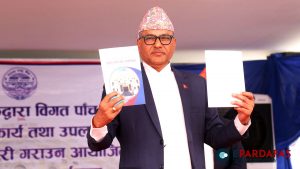
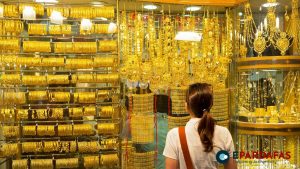
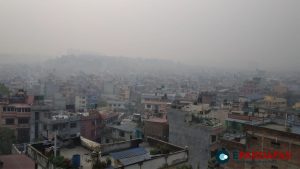



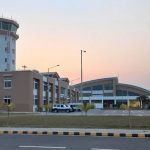



Comments